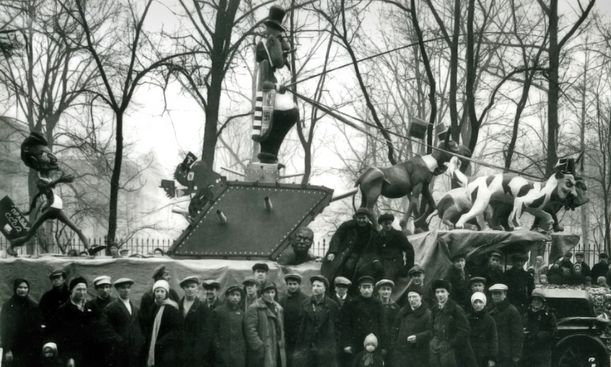The Stalinization of the Communist Party
Once Stalin had decided the intra-party power and policy struggles in his favour, nothing remained of the liberal elements of the NEP for the economy and culture.
After Lenin’s death in 1924, the politburo – the chief political and executive committee of the Communist Party – had seven members. Stalin neutralized his most prominent opponents – Leon Trotsky, Grigory Zinoviev, Lev Kamenev and Nikolai Bukharin – by 1929. By 1930, all of the members of the politburo except Stalin himself were dismissed from office; not one of them lived to see the year 1940. In public they were first vilified and later declared historical non-persons. Stalin now held the exclusive authority over the party. His vast dictatorial power permitted him to carry out a radical change of course. Apart from the figure of Stalin as the chief orientation, three processes were decisive for the reconstruction of the society: forced industrialization, the collectivization of agriculture and the spread of terror. These measures cost millions of people their lives.

An agitation vehicle of the Academy of the Arts in Leningrad shows Trotsky as a tool of world imperialism, 1930.
Political neutralization followed personal vilification: the suitcase “Trotsky” is holding (far left) bears the inscription “The TRUTH about the USSR”.
Source: Deutsches Historisches Museum, Berlin
Joseph Stalin’s closing remarks at the 15th Congress of the CPSU (B), 7 December 1927
“We are now undergoing a period of change from the restoration of the industry and agriculture to the reconstruction of the entire national economy, to its reorganization on a new technological basis, since the establishment of Socialism is no longer a prospect for the future, but a current, practical task, which makes it necessary to overcome the most serious difficulties of an internal and external nature. [...] And if a number of leaders who do not choose to sit firmly in the wagon should now topple out of it, it comes as no surprise. This will free the party of people who cling to its feet and prevent it from advancing. These people seriously seem to want to leave our party wagon. Well, if one or the other old leader turns into ballast and chooses to topple out of the wagon, then that is the course that is granted them!”
Source: Joseph Stalin: Reply to the Discussion on the Political Report of the Central Committee to the 15th Congress of the CPSU (B), 7 December 1927.
